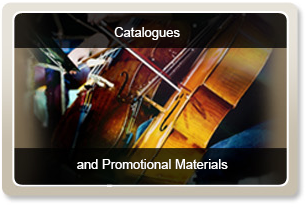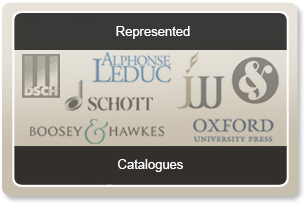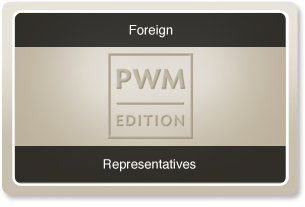News
Agata Zubel about "Chapter 13"
2016-01-18
19 January – Los Angeles witnesses the premiere of Agata Zubel’s newest piece Chapter 13. We had interviewed the composer just before she left to LA.
In what circumstances was your newest work, Chapter 13, written?
As is so often the case, we never know what events from the past weigh in unexpectedly to the fate of that or other ideas after years. In the last few years I have had quite full artistic contact with the United States. That's why the mail with the proposal of a commission from the Los Angeles Philharmonic was not only nice, but had, as they say, 'many fathers'. I hadn't met maestro Dudamel before, director of that Philharmonic, or his ensemble, so it is rather a result of their observations and resonances of my earlier works. It's a clear thing that I was happy with the forces proposed to me: soprano and chamber ensemble, which was established beforehand, but apart from that I had complete freedom for what and how I would like to write.
Was the work written for a special occasion?
Chapter 13 will be performed during a concert from the Green Umbrella series, which presents contemporary music. It is not a festival, but a series of concerts as part of the season in the LA Philharmonic.
What does the title of the work Chapter 13 signify?
This is about the 13th chapter of the book The Little Prince by Antoine de Saint-Exupéry, whose text I used in the work. Apparently the idea and the book were born exactly in… Los Angeles, where Antoine de Saint-Exupéry spent time in 1941. I have always wanted to write a piece to the text of Little Prince, so when I got a commission exactly from LA, I decided to use the occasion and give this a real musical form.
Is Little Prince an important book for you?
Like most of us, I'm sure, I adore this book, it reminds me of my childhood. It is very worthwhile reading and at the same time – as a children's book – is accessible to everyone. It puts into confrontation the difference in the way children and adults perceive reality, it touches upon universal themes, truths which we as adults sometimes contort, and here are told in the language of children – simple and beautiful.
Amongst the many meetings that occured during the Little Prince's journey you selected just one – with the banker. Why this one?
There are of course many discussions in the book and they are all wonderful. The limited duration of the work meant however that I could only use one chapter. I looked for such a fragment which would create the most closed form which could be fitted in such a short work. I decided on this one.
Could the choice of the scene depicting the Banker counting the stars be interpreted as a manifestation of social criticism?
The criticism is contained in the text itself, captured in a very delicate way. The book's message is simple and addresses basic problems of friendship and love. It concerns values which we should care for, but which the whole time we lose and which escape from our hands.
What is the relationship of the text to the music in this work?
I tried to reflect the text as simply as possible but not in a literal manner. There may be some effects that suggest the sounds of counting or with certain gestures sounds characteristics for the stars. This isn't about illustration but about giving the words through music, the poetry of the language, conveying emotions.
In your vocal part you answer for both the Little Prince and the Banker. Did you vary these characters in a musical way?
The narration in this work is quite linear. Thanks to this the question of these two characters appearing one after the other are quite clear. Both parts are not very varied although certain elements in the instrumental accompaniment try to reflect the character of the Banker or the Little Prince. This isn't about pure illustration.
May we expect some additional theatrical elements in your performance underlining the content of the work?
We'll see (smile). We're still before the premiere, and so maybe something interesting will come up during the rehearsals? This wil be the first time I will collaborate with the LA Phil New Music Group and I am very interested about this collaboration.
How did you create the vocal part in this work?
Usually in my works I make use of amplification – thanks to amplification I can use a very wide pallet of vocal effects which otherwise would never break through the instrumental part. In this case, however, I decided that the work will be purely acoustic which forces me to use a completely different type of singing. You could say that I will sing like a 'real' soprano: a big, carrying voice.
In which way does the percussion – the most important instrument for you after your voice – create the musical narration?
As a former percussionist I treat this instrument a little unlike others, that's true. In this piece there are also moments in which the percussion has a particular role. But I think that all the instruments equally comment upon the narration of the work.
In the work we are going to see musicians moving around the hall. What is the intention?
This might just be not an easy challenge in the Walt Disney Concert Hall. The instruments represent kinds of satellites in relation to the vocal part. In this way I wanted to make a bigger space, to give the character of the planets that the Little Prince went amongst.
Did you use some interesting special effects to create the impression of outer space?
Even if I use unusual performance techniques I always try to do so in the service of the particular mood I am trying to create. In the case of this piece for example the harp is tuned a quarter tone lower than the other instruments. It often plays together with the piano with similar sound material. Putting together the sounds of these two instruments gives the impression of a honky-tonk piano. There is also an effect referring to the tills which count the stars in the Banker. In this fragment there is a bit of unusual articulation, like 'lip-smacking' in the oboe, puffing of air, or playing col legno in the strings. The most important however is how they give an effect together and how they colour this wonderful text.
Could we treat Chapter 13 also as a work also for children?
It seems to me that this piece could fulfil the same function as the text upon it is based. The Little Prince is intended for both children and adults. The text which I chose was only delicately musically coloured by me. It was important to me that this piece would not be too difficult. I wanted so that the whole tale of the Little Prince and the banker and the stars and all the values they carry would get to the audience. I tried to use fairly simple musical language and enough simple statements so that the content would reach the listeners in a direct manner. I think that the piece can serve older listeners as well as younger. I'll say more – I would like that when listening to Chapter 13, everyone will find as much of a child in themselves, with a sincere and unburdoned view of the world, that their musical and world experiences will allow.
The composer was interview by Krzysztof Stefański











